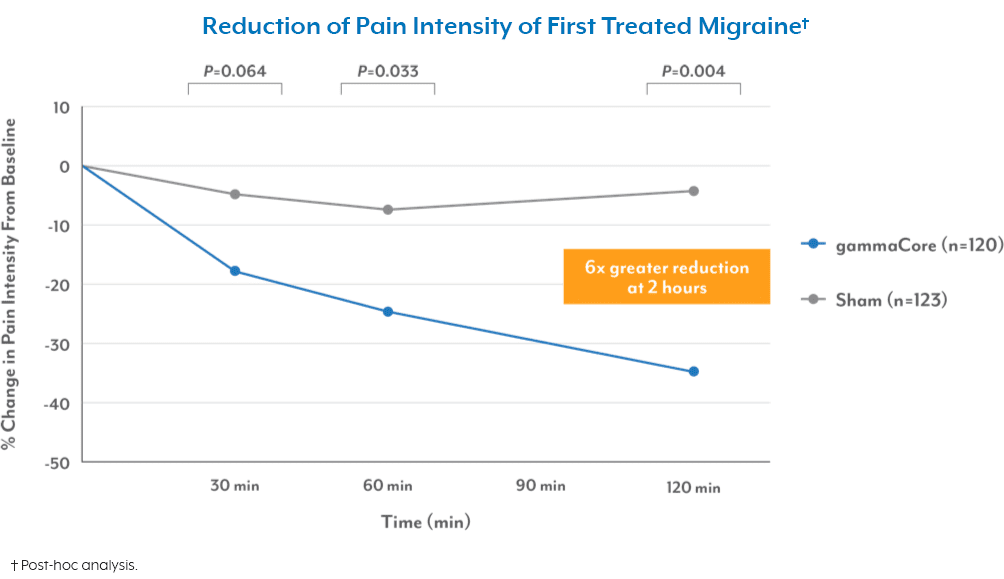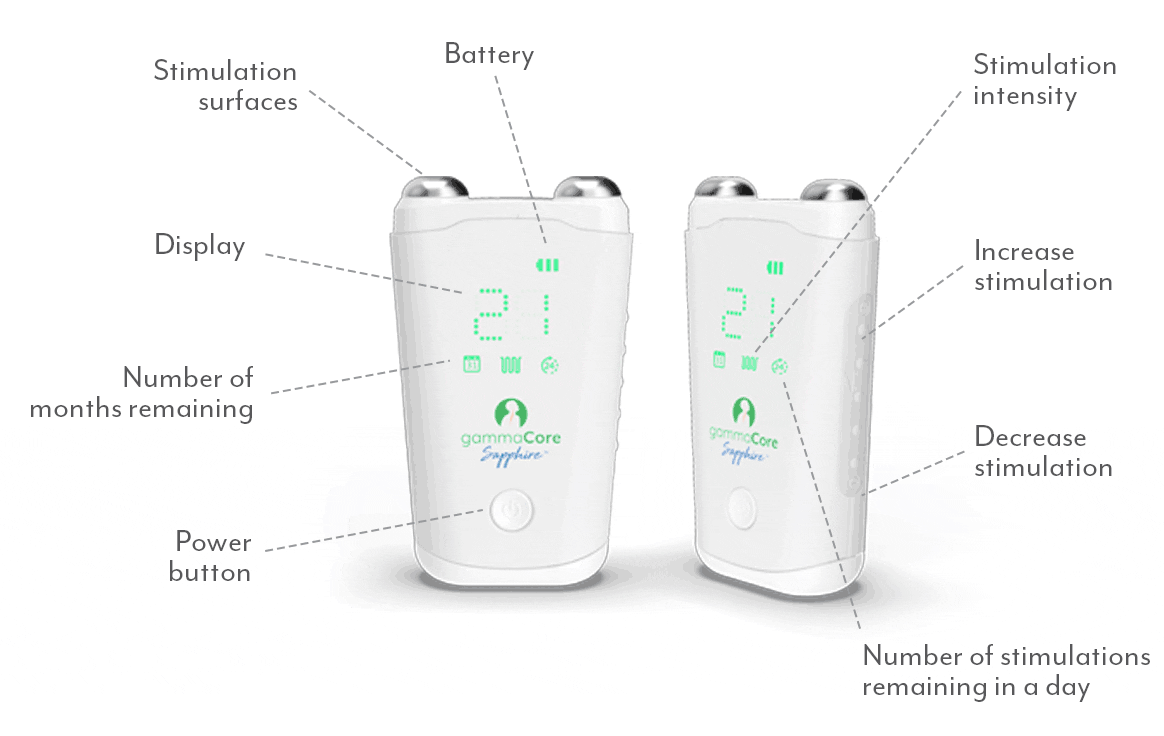Just The Facts
Migraine and cluster headache pain impact millions of people worldwide and can have a significant and lasting impact on patients' quality of life.
Roughly 39 million people in the United States3 and 1 billion people worldwide suffer from migraine4.
In total, the economic impact of migraine headache in the United States is estimated to be between $13 and $17 billion annually.5
Nearly 88% of people with chronic migraine have at least one comorbid condition, while 39% have four or more comorbid conditions.6
Migraine is the third most common disease in the world, affecting 1 out of every 7 people globally.7
Cluster headache affects approximately 1-2 people in every 1,000.8
36% of Veterans who had completed a 12-month deployment to Iraq were either diagnosed with or exhibited symptoms of migraine.9
In 2016, the combination of medical costs and lost productivity due to migraine in the United States totaled $36 billion.10
Migraine is 3x more common in women than men. Migraine affects over 30% of women over a lifetime.11
Cluster headache patients take their own lives 20x more than the national average.12
1 in 4 households in America has a member with migraine.13
Veterans are more likely to experience migraine and headaches than civilians.14
What Is gammaCore nVNS?
gammaCore has the broadest scope of headache indications for any prescription therapy, drug, or device.15 It is a small, handheld, user-administered therapy with 6 FDA-cleared indications for migraine and cluster headache. Designed as an easy-to-use device with little to no downtime, it can be used alone or with other medications or treatments you currently use in your practice.
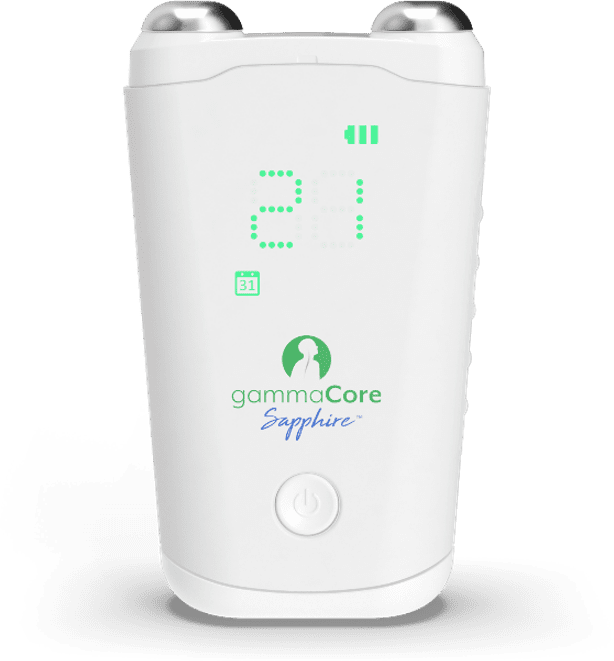
How It Works
gammaCore delivers gentle, patented electrical stimulation to the vagus nerve through the skin at the side of the neck—the most ideal location for reaching vagus nerve fibers. Our sine wave, or smooth wave, allows the electrical stimulation to pass through the skin effectively and comfortably, and has been proven to reduce pain and alleviate symptoms associated with migraine and cluster headache.
By activating the body's natural pain inhibition pathways, gammaCore offers a non-pharmacological and non-invasive option for headache pain management, making it a valuable addition to your treatment arsenal.
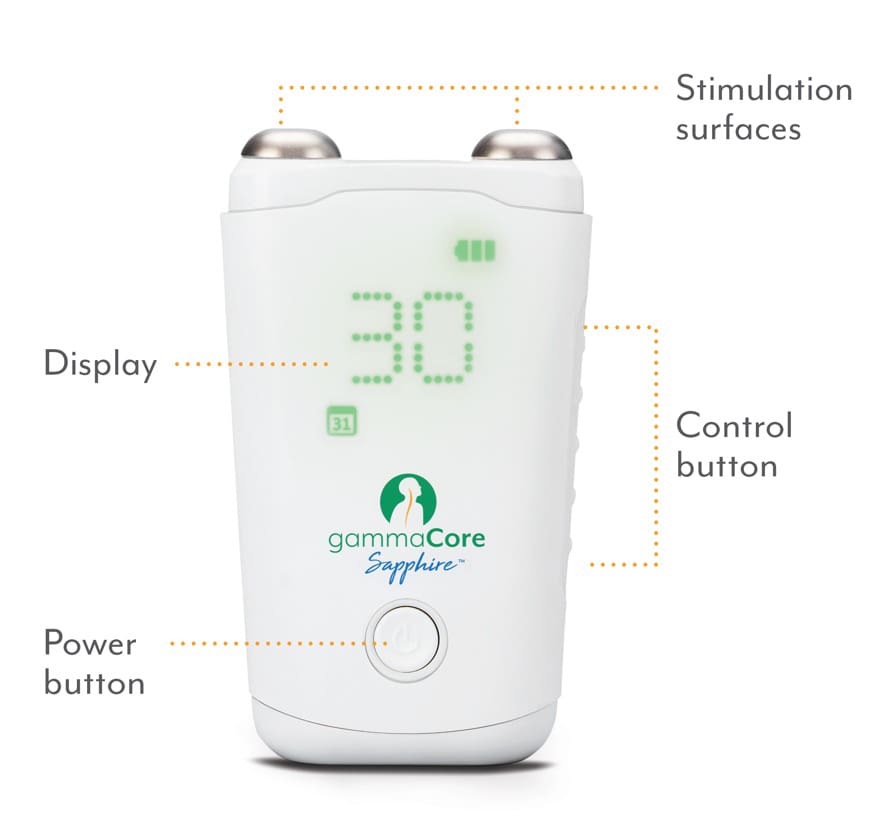
How gammaCore Helps Patients
The benefits of gammaCore extend beyond its innovative mechanism of action. Patients who incorporate gammaCore into their treatment plans may experience:

Pain Relief
gammaCore has demonstrated its ability to significantly reduce headache pain and discomfort in clinical trials, offering patients much needed relief.16,17,18,19

Improved Quality of Life
By alleviating pain, gammaCore allows your patients to resume their daily activities and regain a sense of normalcy.20,21

Patient Empowerment
gammaCore is designed for at-home use, allowing patients to self-administer treatments as needed under your guidance, enhancing their sense of control over their pain management.
Clinically Proven Results
In a double-blind, randomized, sham-controlled clinical study, gammaCore reduced pain intensity over 3x greater than sham at 60 mins and over 6x greater at 2 hours.22

Safe
Clinically tested and FDA-cleared for migraine treatment in adults and adolescents 12+.

Fast
Users feel pain relief in as little as 30 minutes after treatment.23

Reliable
Almost half of users had little to no migraine pain within 2 hours after first use.24

Long-Lasting
The majority of users who were pain-free at 2 hours remained pain-free for 24 hours.25
Looking For More?
gammaCore is supported by more than 7 randomized controlled trials, over 30 mechanism of action peer-reviewed papers, and 40+ peer-reviewed clinical papers. Click the buttons below to learn more about its clinical efficacy and safety profile.
How to Prescribe gammaCore
We offer various prescription paths for you to provide gammaCore to your patients.
The gConciergeTM Program
Allows for gammaCore to be provided at point-of-care and ensures patients have access to training to help maximize treatment outcomes.
Learn MoreThe gC Direct Program
Enjoy the freedom of not having to keep inventory in your practice, and let us take care of the logistics and patient training.
Learn MoreVeteran Affairs Ordering
gammaCore is currently being prescribed in over 135 VA Facilities nationwide, plus Community Care and Telehealth Services.
Learn MoreAll Other
Methods
If what you are looking for isn't listed, please contact us for more information on our prescription paths.
Learn MorePhysician Recommended
Dr. Sara Sacco, a Headache Specialist in Charlotte, North Carolina, sees a lot of patients who suffer from migraine and cluster headache. Her patients have seen "wonderful results" when using gammaCore. Click the video below to learn more about her experience.
Speak To A Specialist
To learn more about gammaCore and how it can benefit your headache patients, contact us to schedule a demonstration today.
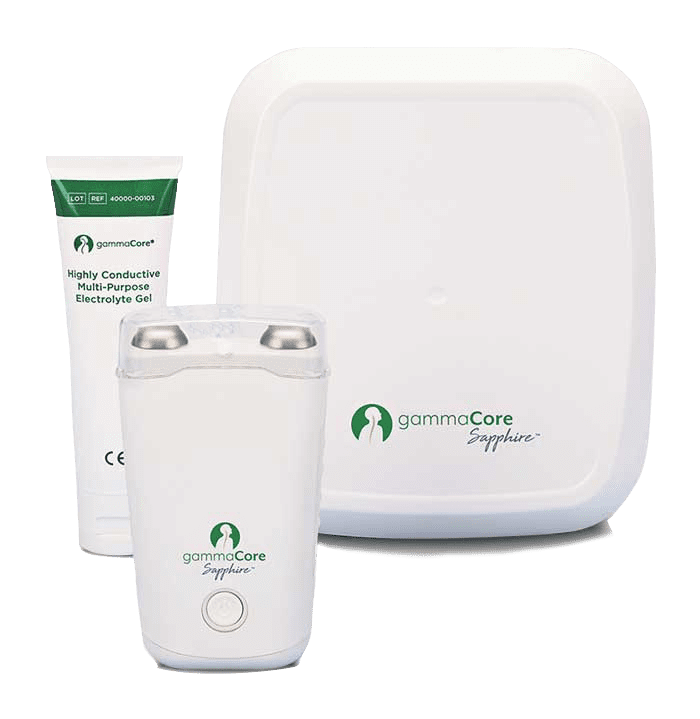
1. Nonis, R., DʼOstilio, K., Schoenen, J., & Magis, D. (2017). Evidence of activation of vagal afferents by non-invasive vagus nerve stimulation: An electrophysiological study in healthy volunteers. Cephalalgia, 37(13), 1285–1293. https://doi.org/10.1177/0333102417717470
2. Frangos, E., & Komisaruk, B. R. (2017). Access to vagal projections via cutaneous electrical stimulation of the neck: FMRI evidence in healthy humans. Brain Stimulation, 10(1), 19–27. https://doi.org/10.1016/j.brs.2016.10.008
3. Logan, A. (2021). What is migraine? American Migraine Foundation. https://americanmigrainefoundation.org/resource-library/what-is-migraine/. Accessed September 25, 2023.
4. American Migraine Foundation. (2019, March 28). The Facts about Migraine | American Migraine Foundation. https://americanmigrainefoundation.org/resource-library/migraine-facts/. Accessed September 25, 2023.
5. Lipton, R. B., & Bigal, M. E. (2005). Migraine: Epidemiology, impact, and risk factors for progression. Headache, 45(s1), S3–S13. https://doi.org/10.1111/j.1526-4610.2005.4501001.x.
6. Repinski, K. (2022). Chronic migraine and comorbid conditions: What you need to know. GHLF.org. https://ghlf.org/migraine/chronic-migraine-comorbid-conditions/. Accessed September 25, 2023.
7. American Migraine Foundation. (2019, March 28). The Facts about Migraine | American Migraine Foundation. https://americanmigrainefoundation.org/resource-library/migraine-facts/. Accessed September 25, 2023.
8. Cluster headache - The Migraine Trust. (2022, March 8). The Migraine Trust. https://www.migrainetrust.org/about-migraine/types-of-migraine/other-headache-disorders/cluster-headache/. Accessed September 25, 2023.
9. Contributor, V. (2017, May 22). Veterans who deployed are more likely to develop migraines or headache disorders - VA News. VA News. https://news.va.gov/38022/veterans-who-deployed-are-more-likely-todevelop-migraines-or-headache-disorders/ . Accessed September 25, 2023.
10. Direct, B. M. S. S., . S. N,. T. S,. C. K,. D. P. (2020, July 30). Study summary: Costs associated with migraine in the United States. AJMC. https://www.ajmc.com/view/study-summary-costs-associated-with-migraine-in-the-united-states . Accessed September 25, 2023.
11. American Migraine Foundation. (2019, March 28). The Facts about Migraine | American Migraine Foundation. https://americanmigrainefoundation.org/resource-library/migraine-facts/. Accessed September 25, 2023.
12. Cluster headache - The Migraine Trust. (2022, March 8). The Migraine Trust. https://www.migrainetrust.org/about-migraine/types-of-migraine/other-headache-disorders/cluster-headache/. Accessed September 25, 2023.
13. American Migraine Foundation. (2019, March 28). The Facts about Migraine | American Migraine Foundation. https://americanmigrainefoundation.org/resource-library/migraine-facts/. Accessed September 25, 2023.
14. Contributor, V. (2017, May 22). Veterans who deployed are more likely to develop migraines or headache disorders - VA News. VA News. https://news.va.gov/38022/veterans-who-deployed-are-more-likely-todevelop-migraines-or-headache-disorders/ . Accessed September 25, 2023.
15. Data on file.
16. Tassorelli, C., Grazzi, L., De Tommaso, M., Pierangeli, G., Martelletti, P., Rainero, I., Dorlas, S., Geppetti, P., Ambrosini, A., Sarchielli, P., Liebler, E., & Barbanti, P. (2018d). Noninvasive vagus nerve stimulation as acute therapy for migraine: the randomized PRESTO study. Neurology, 91(4), e364–e373. https://doi.org/10.1212/wnl.0000000000005857
17. Silberstein, S. D., Mechtler, L., Kudrow, D., Calhoun, A. H., McClure, C. K., Saper, J. R., Liebler, E., Engel, E. R., & Tepper, S. J. (2016). Non–Invasive vagus nerve stimulation for the ACUTE treatment of cluster headache: findings from the randomized, Double‐Blind, SHAM‐Controlled ACT1 study. Headache, 56(8), 1317–1332. https://doi.org/10.1111/head.12896
18. Goadsby, P., De Coo, I. F., Silver, N., Tyagi, A., Ahmed, F., Gaul, C., Jensen, R. H., Diener, H., Solbach, K., Straube, A., Liebler, E., Marin, J., & Ferrari, M. D. (2017). Non-invasive vagus nerve stimulation for the acute treatment of episodic and chronic cluster headache: A randomized, double-blind, sham-controlled ACT2 study. Cephalalgia, 38(5), 959–969. https://doi.org/10.1177/0333102417744362
19. De Coo, I. F., Marin, J., Silberstein, S. D., Friedman, D. I., Gaul, C., McClure, C. K., Tyagi, A., Liebler, E., Tepper, S. J., Ferrari, M. D., & Goadsby, P. (2019). Differential efficacy of non-invasive vagus nerve stimulation for the acute treatment of episodic and chronic cluster headache: A meta-analysis. Cephalalgia, 39(8), 967–977. https://doi.org/10.1177/0333102419856607
20. Strickland, I. T., Mwamburi, M., Davis, S. K., Ward, J. C. R., Day, J., Tenaglia, A. T., Leibler, E. J., & Staats, P. S. (2018). Noninvasive vagus nerve stimulation in a primary care setting: effects on quality of life and utilization measures in multimorbidity patients with or without primary headache. PubMed, 24(24 Suppl), S517–S526. https://pubmed.ncbi.nlm.nih.gov/30543269
21. Gaul, C., Diener, H., Silver, N., Magis, D., Reuter, U., Andersson, A., Liebler, E., & Straube, A. (2015). Non-invasive vagus nerve stimulation for PREVention and Acute treatment of chronic cluster headache (PREVA): A randomised controlled study. Cephalalgia, 36(6), 534–546. https://doi.org/10.1177/0333102415607070
22. Tassorelli, C., Grazzi, L., De Tommaso, M., Pierangeli, G., Martelletti, P., Rainero, I., Dorlas, S., Geppetti, P., Ambrosini, A., Sarchielli, P., Liebler, E., & Barbanti, P. (2018d). Noninvasive vagus nerve stimulation as acute therapy for migraine: the randomized PRESTO study. Neurology, 91(4), e364–e373. https://doi.org/10.1212/wnl.0000000000005857
23. Tassorelli, C., Grazzi, L., De Tommaso, M., Pierangeli, G., Martelletti, P., Rainero, I., Dorlas, S., Geppetti, P., Ambrosini, A., Sarchielli, P., Liebler, E., & Barbanti, P. (2018d). Noninvasive vagus nerve stimulation as acute therapy for migraine: the randomized PRESTO study. Neurology, 91(4), e364–e373. https://doi.org/10.1212/wnl.0000000000005857
24. Tassorelli, C., Grazzi, L., De Tommaso, M., Pierangeli, G., Martelletti, P., Rainero, I., Dorlas, S., Geppetti, P., Ambrosini, A., Sarchielli, P., Liebler, E., & Barbanti, P. (2018d). Noninvasive vagus nerve stimulation as acute therapy for migraine: the randomized PRESTO study. Neurology, 91(4), e364–e373. https://doi.org/10.1212/wnl.0000000000005857
25. Tassorelli, C., Grazzi, L., De Tommaso, M., Pierangeli, G., Martelletti, P., Rainero, I., Dorlas, S., Geppetti, P., Ambrosini, A., Sarchielli, P., Liebler, E., & Barbanti, P. (2018d). Noninvasive vagus nerve stimulation as acute therapy for migraine: the randomized PRESTO study. Neurology, 91(4), e364–e373. https://doi.org/10.1212/wnl.0000000000005857


